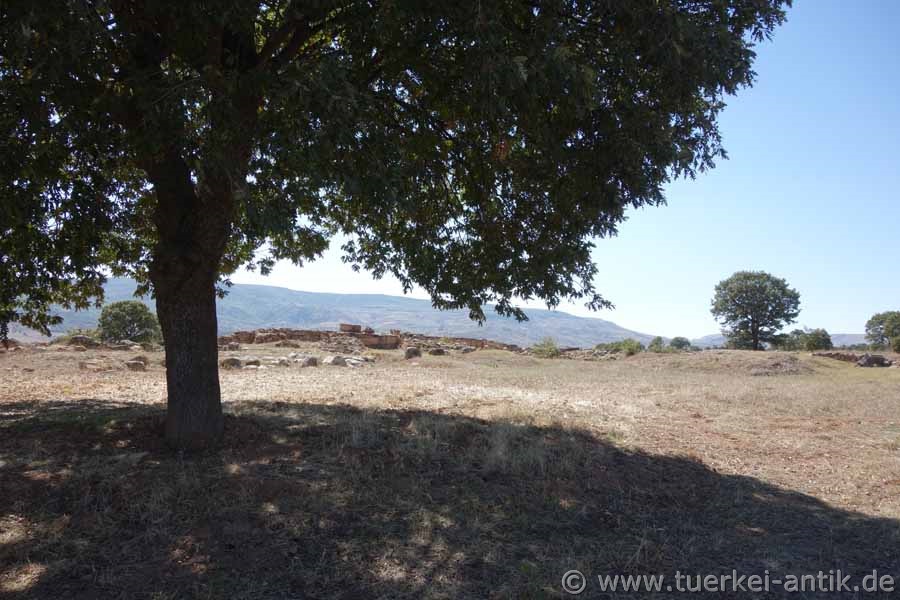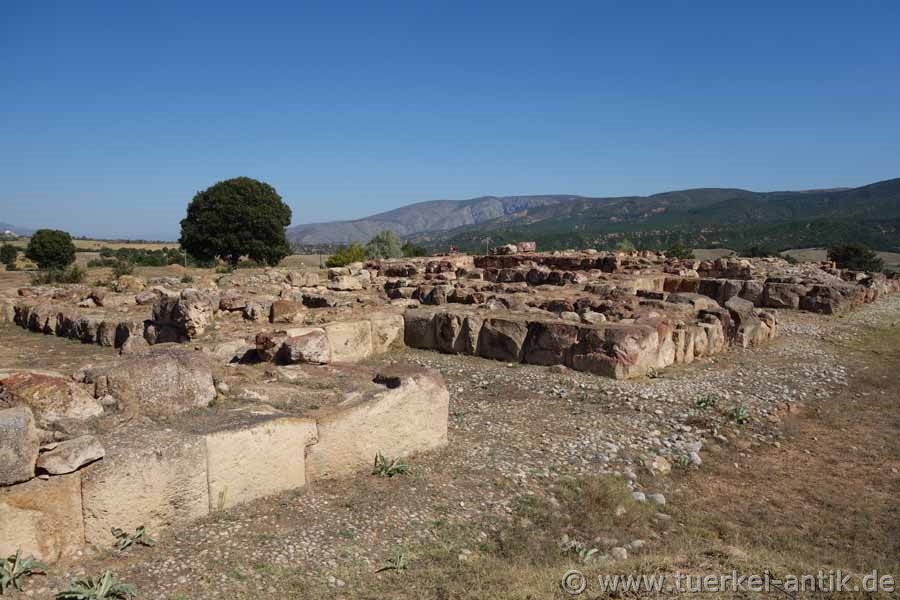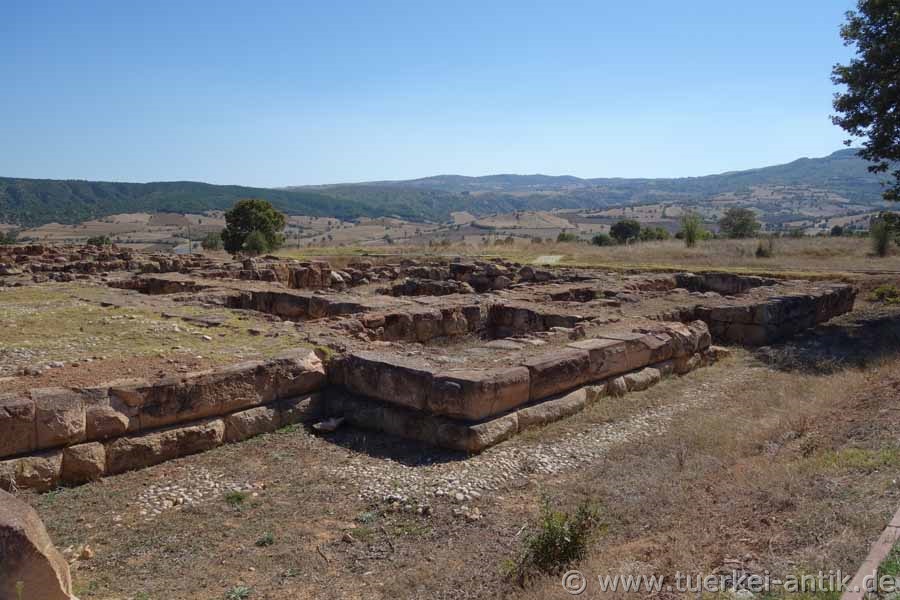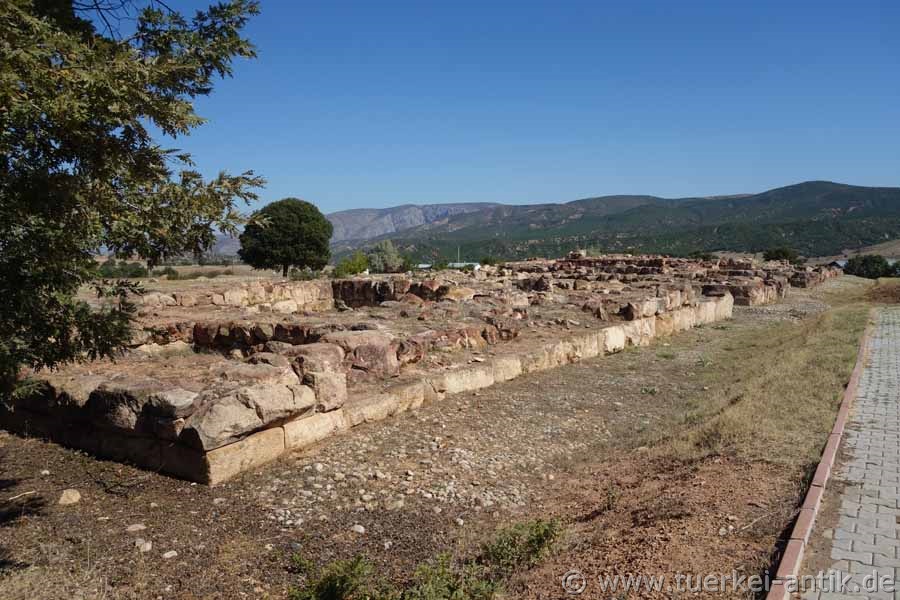 |
| Šapinuwa | |||
 |
|
||
| The settlement hill | |||
|
The town lies on the route that leads from the Hittite capital Hattuša in the west through the plain of Sungurlu/Alacahöyük to the east into the Caucasus. This gave it a strategically important position. |
|||
|
|
|||
| Building B | |||
|
Šapinuwa has been excavated since 1990 by a team from Ankara University. The building was completely destroyed by a fire, after which the entire village was abandoned. More than 4000 fragments of cuneiform tablets have been found in the fire debris of the upper floors, but only a fraction of them have been published so far. |
|||
|
|
|||
| Building B | |||
|
During a further excavation in 1994, 160 meters southeast of the building B, which measures about 25 × 40 meters, came to light. On the foundation walls of carefully worked stone blocks, 1.10 metre thick clay brick walls with a 2-3 centimetre thick plaster layer were found. Inside the building about 40 Pithoi came to light. They served as storage vessels for various types of food. Building B had at least one upper floor. |
|||
|
|
|||
| Building A | |||
|
|
|||
|
Of the cuneiform tablets found in building A, about two thirds are written in Hittite, a smaller part in Hurricane, the rest in Akkadian or bilingual Hittite-Hurric, Hittite-Akkadian or Hittite-Hattish. Most are letters, but also texts of a religious nature, omentexts and lists. Since a considerable part of the letters are addressed or sent to the Grand King or Queen, in addition to high officials, it can be assumed that Šapinuwa was a royal seat.
The Hurricane texts are predominantly religious in content and refer mainly to the itkalzi ritual, a cleansing ritual. The excavators date the town to the 14th century B.C., the time of the Hittite Empire, due to the numerous names in the texts, which are also documented in texts from Masat Höyük. |
|||
|
|
|||
 |
|||
| Building A | |||
|
|
|||
|
According to a cuneiform text from Bogazköy about the delivery of clay pots, the town was situated if an average daily capacity of a transport cart of 30-35 km is assumed, about 100 km away from Hattuša. The Hurricane weather god Teššub is mentioned in the Šuppiluliuma-Šattiwaza Treaty. |
|||
|
|
|||
|
|
|||
|
Building A |
|||
|
|
|||
|
|
|||
| Photos: @chim, Monika P. | |||
| Translation aid: www.DeepL.com/Translator | |||
| Source: Wikipedia and others | |||
|
|
|||



